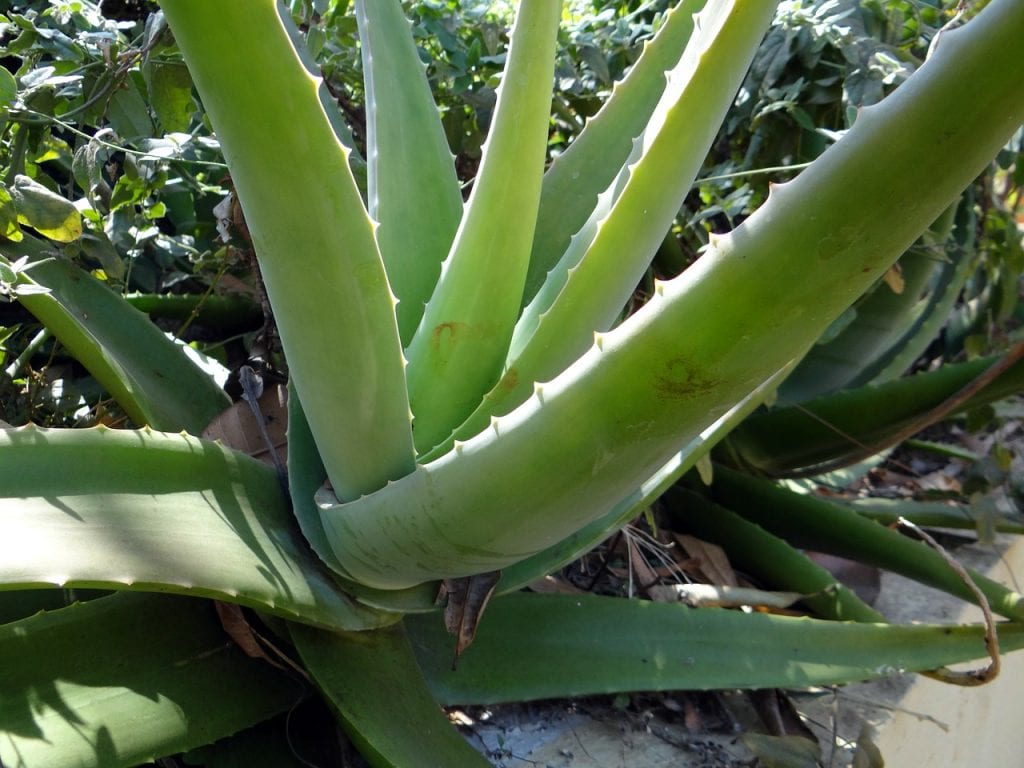
It is the most popular succulent plant. Its magnificent healing properties have made it such a beloved plant that in all gardens, patios, balconies or terraces a space is reserved to have at least one specimen. Furthermore, it is very easy to care for and multiplyTherefore, although at the beginning we have to spend about four euros on an adult specimen, in just two years we can have a few more seedlings.
The scientific name for this gift of nature is Aloe vera. If you want to know absolutely everything about it, its care, the problems it may have and how to solve them, the uses it has,… in short, all its secrets, here is the special one that we have prepared for you.
Aloe vera characteristics
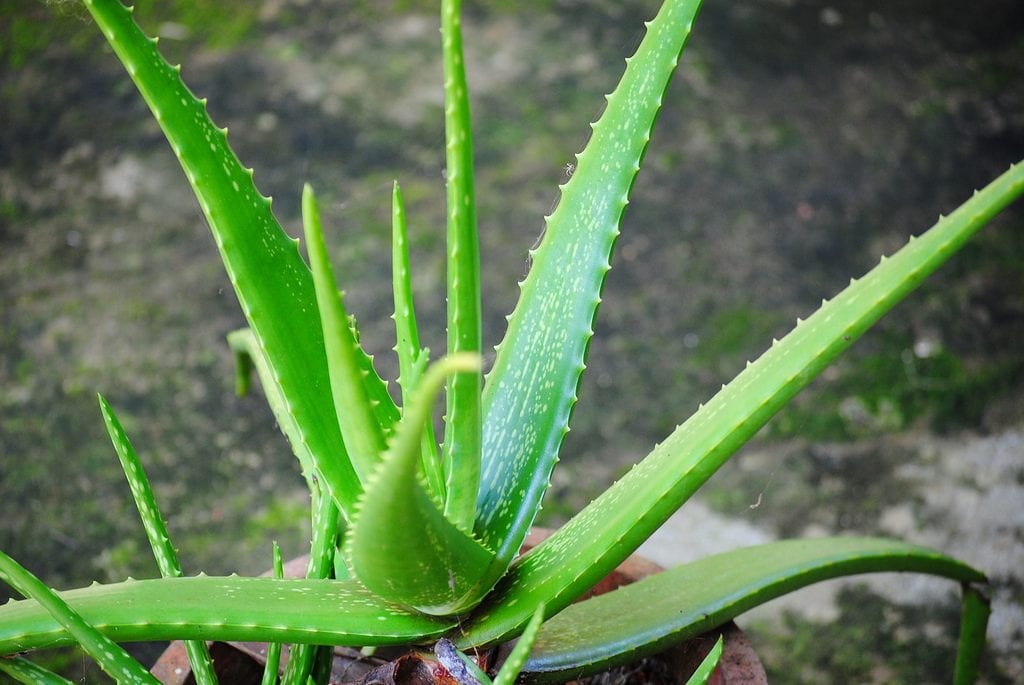
Aloe vera, known as Aloe, Savila, Aloe from Barbados or Aloe from Curaçao, is a succulent plant of the Asphodeloideae subfamily within the Xanthorrhoeaceae family native to Arabia that has become naturalized in the subtropical and temperate regions of the world.
It is characterized by having leaves up to 50cm long by about 5-7cm wide grouped in a basal rosette composed of about twenty leaves, which are lanceolate, pointed and serrated. These are green, and do not have spots, except if the young plant. They also do not usually have a stem, although some specimens have a very short one covered by leaves. The flowers appear grouped in inflorescences up to 100cm high, and are of a very vivid yellow color.
How do you take care of yourself?
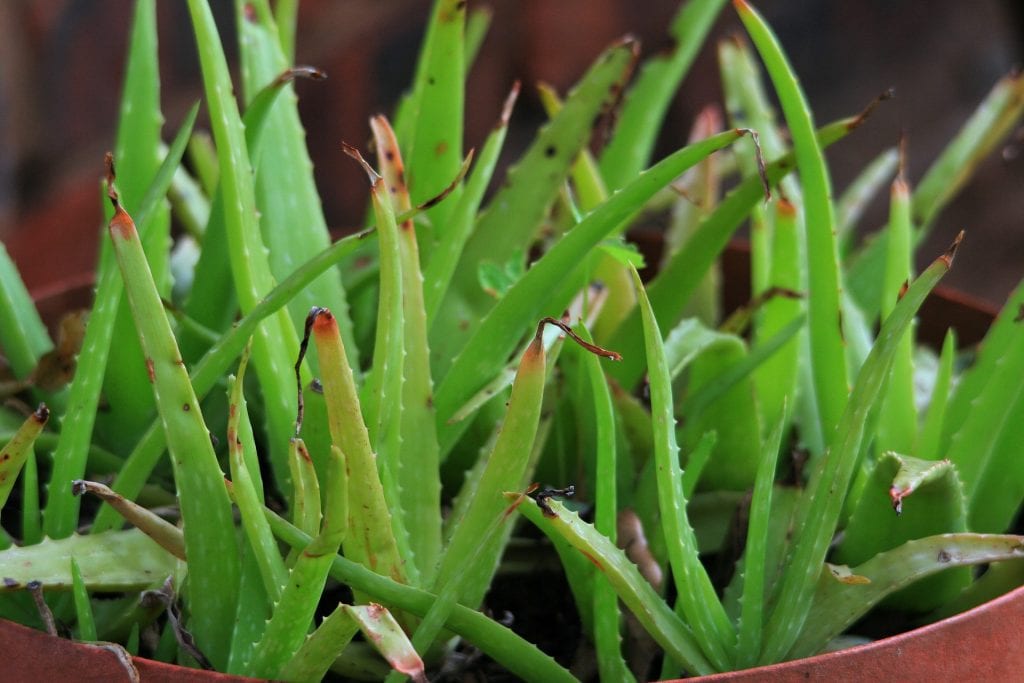
To have a splendid Aloe plant, the following must be taken into account:
Location
Although it can often be found growing in full sun, the ideal is to have it in semi-shade, in an area where the star king directly gives you a few hours in the morning or in the afternoon.
Irrigation
Irrigation will have to be frecuente, but avoiding waterlogging. Thus, in spring and summer it is advisable to water twice a week, maximum 2; On the other hand, the rest of the year it has to be watered once a week or every ten days.
Transplant
Whether you want to move to the garden or to a larger pot, you have to do it in spring, when the risk of frost has been left behind. Let's see how to proceed in each case:
Plant an Aloe vera in the garden
This plant is very well in the gardens, which will beautify during the summer with its beautiful flowers. To get something so special you have to do the following:
- A hole is dug deep enough to fit well.
- Mix the earth with perlite in equal parts.
- The plant is extracted from the pot, being careful not to break the roots (although if one were to break, nothing would happen 🙂).
- It goes into the hole.
- It is filled with the mixed earth.
- And finally it is watered.
Change from pot to Aloe
Being a fast growing plant, it will be necessary to change the pot every year, or every two at least. To do this, you have to do the following:
- The pot is prepared, which has to be about 2-3cm in diameter wider than the one it has had so far.
- The substrate is prepared, which is recommended to be composed of black peat mixed with perlite in equal parts.
- The pot is filled a little with the mixture.
- Aloe is extracted from the 'old' pot.
- The plant is introduced into the new one, and it is seen that it looks good, neither too high nor too low.
- It finishes filling.
- And finally it is watered.
Subscriber
Since you never know when it can be useful to us, you must pay with natural mineral fertilizers, such as Nitrofosca once every 15-20 days throughout the growing season, that is, during the spring and summer months.
We will add a tablespoon of coffee and mix it with the most superficial layer of the substrate or the earth, and then give it a generous watering.
Pruning
It must of remove flower stem When it's withered
Multiplication
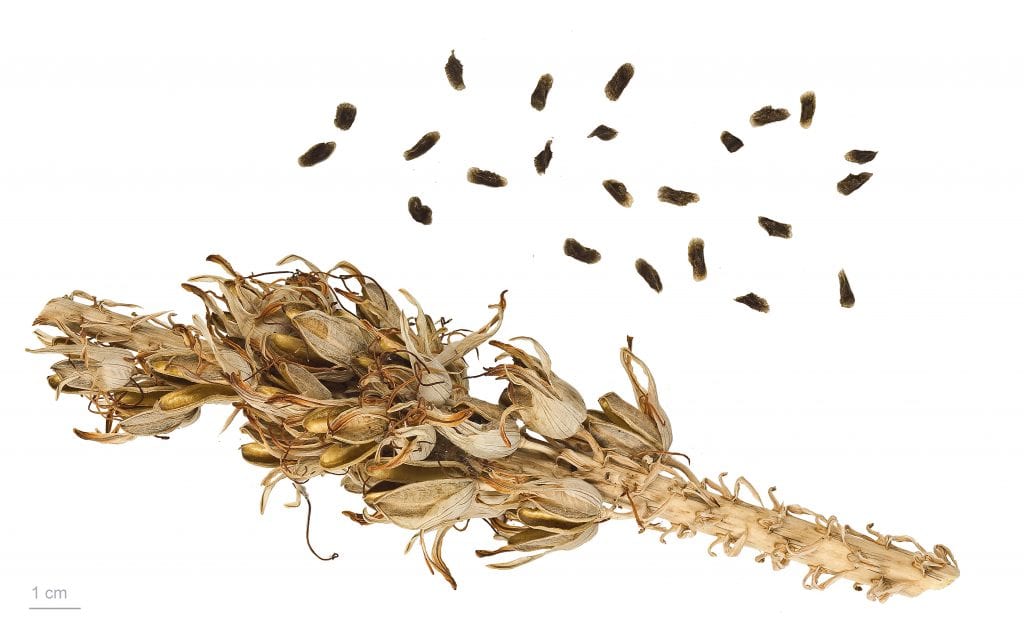
Aloe vera can be multiplied by seeds or by young. Let us know what we have to do in each case:
Sowing seeds
Sowing seeds of a succulent plant like this is a wonderful experience, since you know that in four years you will be able to enjoy its incredible benefits. So that, in spring the seeds can be purchased, and they can be sown in the seedbed that we prefer: conventional pots, cork trays to which we have previously made some small holes for drainage, plastic seedling trays, milk containers, yogurt glasses, ... in short, the first thing we have on hand, always and when it has holes for the water to drain.
Once we have the seedbed, you have to prepare the substrate. This has to be sandy, like river sand mixed with vermiculite in equal parts for example, since this way the germination rate will be much higher than it would be if they were sown in peat or mulch.
Now, you have to fill the seedbed almost completely, and place the seeds on the surface of the substrate so that they are slightly separated from each otheras they grow very fast and the seedlings could have trouble developing properly if they are too close together.
When finished, they are covered with a thin layer of substrate, watered and They are placed in an area where they get a lot of light, but not direct.
They will germinate very soon if watered every 2-3 days, and it may take no more than two weeks to do so.. Of course, when they germinate, they should be left there at least until they reach a size of about five centimeters.
Separating the suckers
Aloe vera produces many suckers from an early age. For this reason, it is one of the most popular plants in the world that has such a low price. And it is that, separating the suckers is a very simple task: when they have reached a size of about 4-5cm in height, They are separated from the mother plant by digging a little around so that they come out with roots, and are left for two weeks in an area protected from the sun to heal the wounds.
After that time, they are planted in individual pots.
Rusticity
Withstands frost up to -2ºC if they are short-lived.
Problems
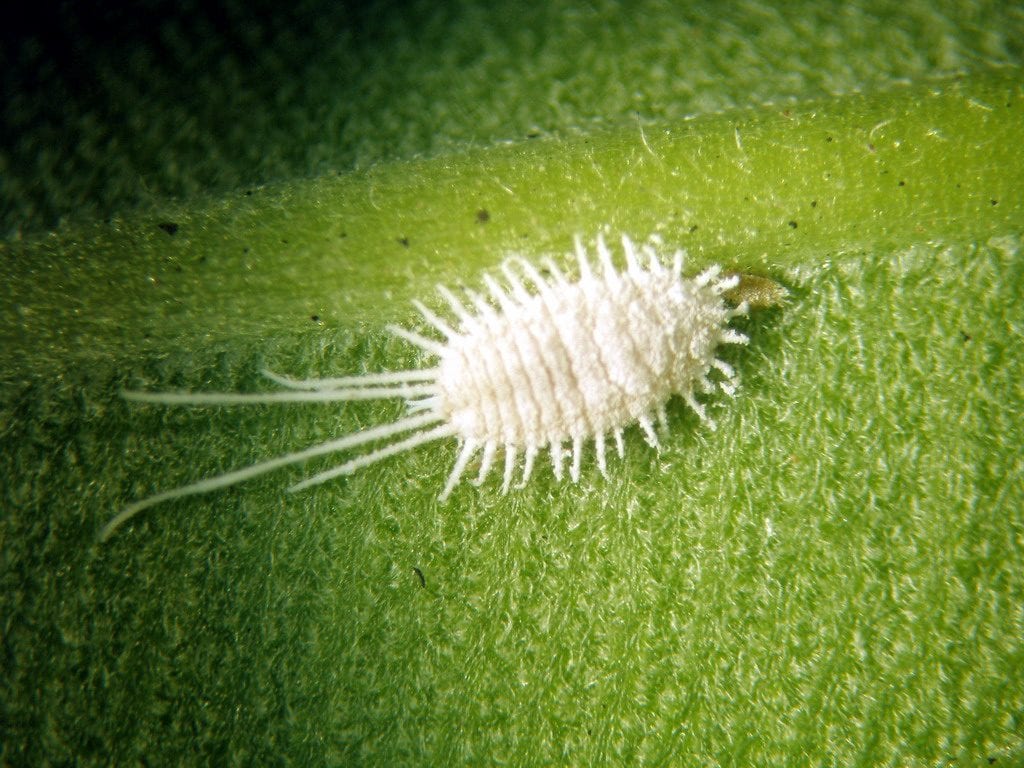
Image - Todohuertoyjardin.es
While it is a very hardy and adaptable plant, it can run into problems from time to time.
Pests
All the mealybugs and aphids they are your main enemies in hot, dry climates. The former are placed at the junctions of the leaves with the stem to feed on the sap without being disturbed by anyone. Fortunately, they can be removed by hand or with a cotton swab dipped in water. In the case of the latter, they tend to adhere to the floral stem, so the plants must be treated with Neem Oil or cut the affected part.
Fallen leaves, 'sad' looking plant
When that happens, it is because it is placed in an area where there is not enough light.
Brown leaves
It is receiving too much direct light of the sun.
Soft leaves
If the leaves start to be very soft, it is because we are watering it excessively. To correct the problem, it is advisable, if we have it in a pot, extract it from it and wrap the root ball with absorbent paper -such as kitchen one, for example-, and keep it in a bright place but protected from the sun for 24 hours, and the next day plant it back in the pot.
In the event that it is on land, we will be without watering for about five days. This gives you enough time to dry.
Even so, and to prevent fungi from infecting you, you must treat with copper or sulfur in spring or fall, or with systemic fungicide in summer.
Aloe vera uses
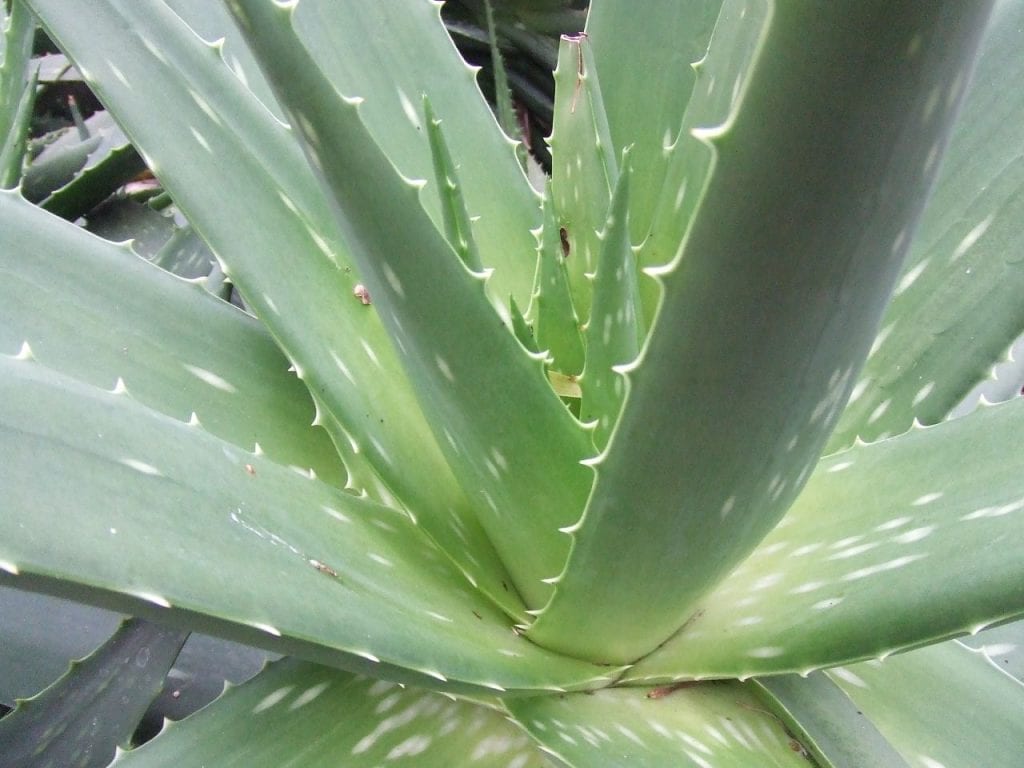
This is an incredible plant that is used as an ornamental to decorate gardens or patios, but also and above all for its medicinal properties. Often you find his image in a wide variety of products: gel, shampoo, soap, cream, toothpaste ..., which is logical that we end up wondering what properties it has.
As well. These are its chemical components:
- Water: it is composed of a high percentage of water, in which biologically active substances are dissolved.
- Amino acids: contains 7 of the 8 essential amino acids for the body, and 18 of the 22 considered secondary, such as Lysine, Valine, Arginine or Tryptophan.
- Anthraquinones: they act as antibacterial, fungicidal, antipyretic, laxative, analgesic and as neuralgic.
- Sugars: Contains fructose, glucose, glucomaman and acemannan. They act as antivirals and anti-inflammatories.
- Enzymes: Like amylase, catalase or lipase, they are essential for the body, since they transform the proteins that we absorb into amino acids, and after the body absorbs them, they become the proteins so necessary to keep us active and with Energy.
- Sterols: reduce the risk of heart disease by inhibiting the absorption of the heart.
- Emoline: together with emodin and barbaloin, they generate salicylic acid which helps us to prevent and / or fight antibacterial diseases as the case may be. In addition, they relieve mild pain and prevent inflammation.
- Lignin and saponin: the first allows the gel to easily penetrate the skin, and the second acts as an antiseptic.
- Minerals: such as calcium, magnesium or iron. We need them for good health and for strong, healthy bones.
- Mucilage: acts as an emollient on the skin.
In short, it's like having a pharmacy -or almost 🙂 - on a single floor, which is not bad at all, don't you think? And it is that, in addition, it contains vitamins A, B, B12 and C, which are responsible for producing energy, and something that you are sure to love: delaying aging by neutralizing the effects of free radicals.
We can find products already prepared in herbalists or even in shopping centers, but if we do not have a way to go or if we prefer to make them ourselves, then we explain how to extract Aloe vera gel.
Extract the gel and enjoy its benefits!
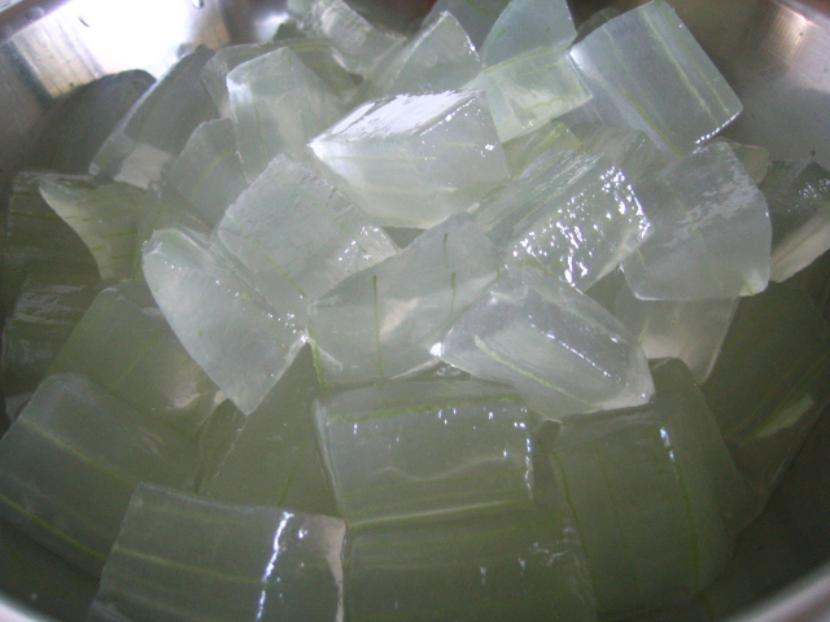
The first thing to do is cut a leaf -which is neither too new nor from the previous year- of the adult plant, that is, of a specimen that has already flowered. Taking into account that its new shoots come out of the center, as new leaves come out the others stay closer to the edge of the pot.
Therefore, you have to cut the one that has already finished its development, but has not yet begun to wilt, that is, with the dry point. So once one has been chosen, it has to be cut with a knife putting it as close as possible to the stem, and carefully cutting the leaf.
Finished this, the blade will be placed lying on a table, and it will proceed to cut with, for example, that same knife previously washed with water horizontally, being very careful not to hurt us. Then, it will be enough to put a little of its gel in that area where we feel itching or discomfort of some kind.
How to make shampoo
Once you have cut the leaf, it can be used to make hair shampoo. As? As follows:
- The first thing to do is mix 60ml of castile soap and plant gel, 5ml of glycerin, 1ml of vegetable oil in a bowl.
- Now, it is kept in a plastic bottle.
- And then, it can be used as many times as necessary, adding just a little as it produces a lot of foam, so it lasts quite a bit 🙂.
How to make juice
If you want you can prepare Aloe juice. For it, You will need the gel of two leaves of the plant that will be placed inside a container with a high rim with water, a teaspoon of honey and / or fruit juice and crush everything well.
The taste of Aloe vera is bitter, so it is highly, highly recommended to add these last two ingredients.
How to make face cream
The cream of this fabulous plant will serve to prevent stretch marks and wrinkles and to delay aging. To do it, you need:
- Pulp -the fleshy part- of an avocado
- 4 Aloe Leaf Gel
- A splash of olive oil
And, to get a free and natural cream, you just have to mix everything well until you see a homogeneous paste, and that's it.
Apply to the face, let it act for about 15 minutes, and after that time you will be like new 😉.
Where to buy?
It can be easily purchased at incubators, agricultural stores and even sometimes in the large shopping centers.
My experience with Aloe vera
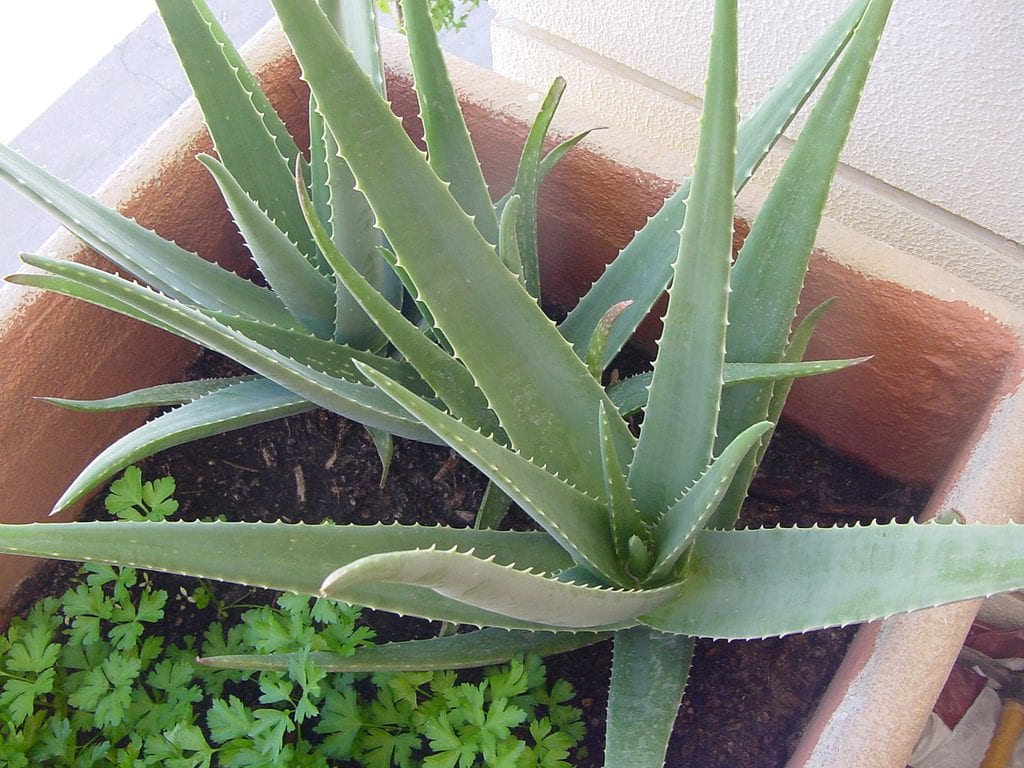
Since I saw it for the first time, back in the year 2000, the truth is that it has never attracted much attention to me. At that time, she didn't know much about plants, but they used to talk about her a lot on television; so when I first saw it it was like saying "so that's the plant." I liked the inflorescence, but it seemed like a very common plant to me. How wrong I was.
It is true. If I had been told at the time that I would end up being useful, I would not have believed it. I could never imagine how much it would serve me years later.
A few years ago, around 2014, I started to get itchy back and arms. At first, I did not know what it could be because at that time I was already living with one of my cats, but we had her - and we have - always dewormed. So, What could it be that made me so itchy?
After thinking about it, it occurred to me that maybe it was the shampoo or gel we bought at the supermarket. And I opted to use one that was glycerin, which is more gentle on the skin. It did not solve the problem. The sensation could be very intense, very annoying, so I was urged to find something that would really serve me. It was when I decided to buy an Aloe vera shampoo and gel. As they say, it was the hand of a saint, really.
I finally found something that worked, that protected the skin and did not itch any. It was incredible. Since then, I have a plant in the yard, which I look at and take care of every day to the best of my ability. And not only that, but every time I see one, even in a market, I look at it with new eyes. It is no longer that "common plant", but it is that plant that has many benefits for your body and for your health.
Conclusion
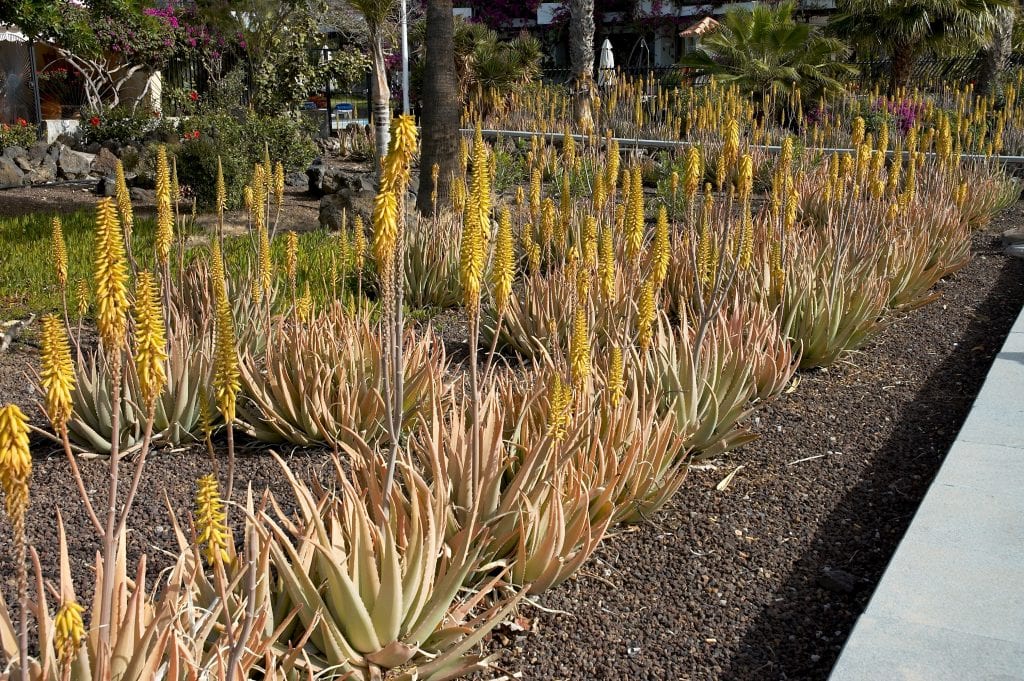
To finish, say that Aloe vera is one of the plants that can not be missing in any home, for all that has been discussed so far. It is very easy to care for and multiply, so much so that it is suitable for beginners. Its beautiful yellow inflorescences will give life to any corner, even those that appear to be abandoned.
If you also want to have a natural pharmacy at home, get a sit-in 😉 .
It was very helpful, thank you very much
Great, I'm glad 🙂
I am a very fan of aloe, with glass or pulp I make many things, shampoo, creams for the face, body and hair, I make soap, well many things, in this way I have been planting for years all the children that were throwing , but now this spring in about 15 days the plants have begun to dry the leaves, and the surprise is that the trunk and roots are completely rotten or dry.
I would like to know why.
All the best
Hello Maria Jesus.
Have you changed the way you care for them? For example, water more often than before, or on the contrary, water them less. In general, you have to water when the land is completely dry, since they resist drought better than waterlogging.
Did you see if they have any pests, such as mealybugs?
If you want, send us some photos to our Facebook so that we can help you better.
regards
Hello, I have had an aloe plant at home for two weeks, I have noticed that very small black dots are coming out on the tips of some leaves, I have watered it twice in these two weeks but I see that my plant is getting sick because those dots They weren't there when I bought it. also some leaves have a part that is turning very light yellow. It gives light but not direct sun.
Hello Ale.
Aloe vera usually has white dots. Anyway, if you want to upload an image to tinypic or imageshack, copy the link here and I'll tell you better.
A greeting.
Hello, I have a red flower Aloe plant and little white spots on its leaves, it is not bitter, I want to know if it can be consumed or only external use?
Hi Myriam.
Do you have any photo? There are species of aloe, such as aloe soapwort, which cannot be consumed. But Aloe vera (whether or not it has white dots) yes.
A greeting.
This morning my father brought me a small aloe vera plant and, searching in different blogs and forums, I have come to yours. This comment is only to tell you that it has been very useful to me and that I will follow your advice to take care of my plant.
All the best
Hello Alejandro.
If you have any doubts, do not hesitate and write to us 🙂
Enjoy your aloe!
regards
Kaere Monica
Jeg har in "muteret" Aloe. Den har flotte store blade og nu in blomst på vej! Er det muligt at komme direkte i kontakt med dig?
Jeg er meget nysgerrig og vil gerne weekende ud af om den virkelig kan ændre sig så voldsomt.
Jeg Vil gerne eftersende et photo.
wh. Lilian
Heh Lilian.
Rart at hilse på dig.
Selvfølgelig kan du sende os nogle photos af din aloe gennem vores Facebook-profile. På denne måde ved vi, hvad der sker med din plante.
Hvis du ikke bruger facebook, så lad os det vide, og med din tilladelse kontakter vi dig via e-mail.
Vær hilset.